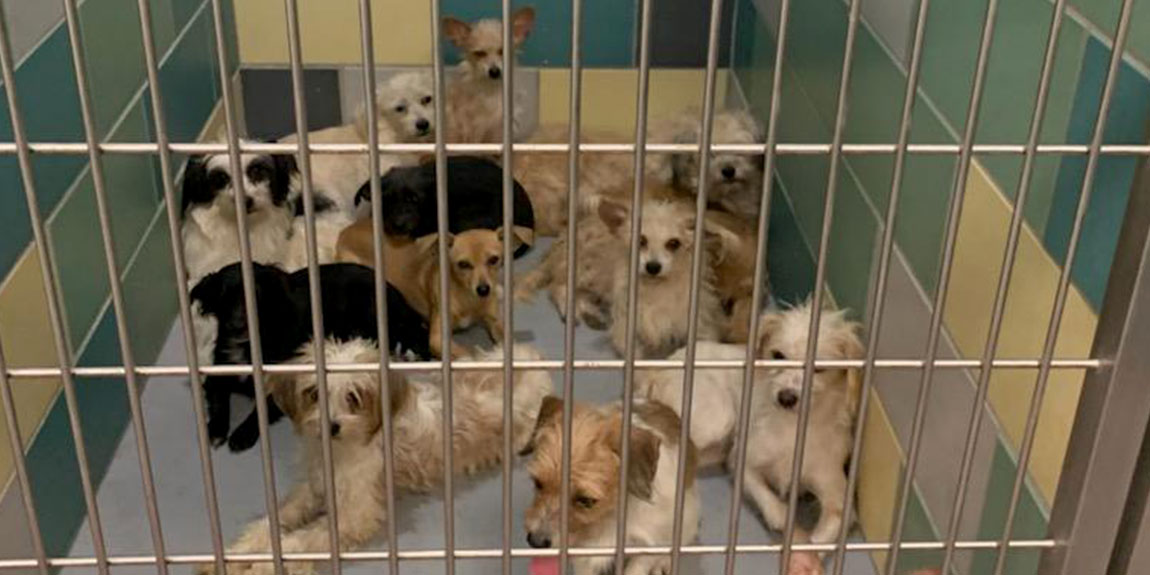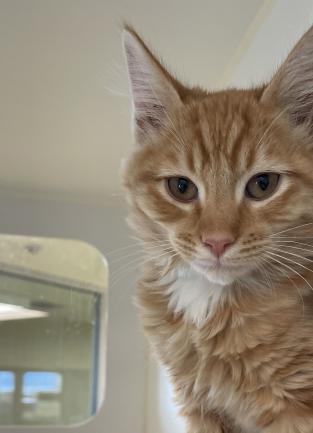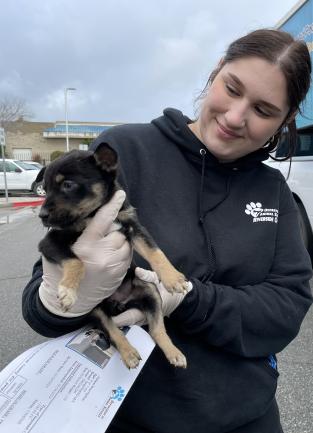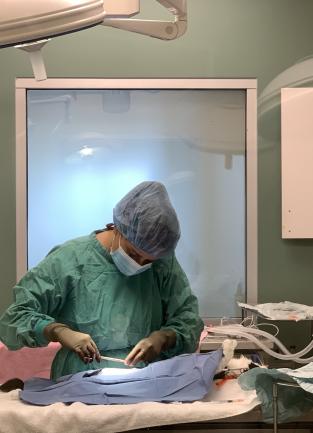Riverside County Animal Services coordinated rescue efforts of dozens of dogs today (Nov. 16) that had been living inside a home in the Cabazon area.
Staffers from the Field, Shelter and Veterinary services divisions worked together to receive 72 dogs to the county’s San Jacinto Valley Animal Campus. Once there, all 72 dogs received veterinary examinations, food and water.
The case involved a senior woman in her 80s who is possibly suffering from early stages of dementia, according to a daughter. Her daughter reached out to Animal Services for assistance and Director Erin Gettis agreed to provide that help.
There is not an open cruelty investigation because the dogs were well fed and cared for, albeit in far-from-ideal circumstances, said Lt. Lesley Huennekens, who initiated the assistance plan.
“This was an example of someone who was truly in need of our help,” Lt. Huennekens said. “The daughter inherited a very troubling situation. She did the right thing by seeking our guidance and assistance.”
The transport efforts took place Tuesday (Nov. 15) and the rescue operation happened this morning. The owner’s daughter brought all the dogs to the shelter herself.
Three longstanding rescue organizations agreed to be partners in assisting Animal Services in this significant hoarding case. Staffers and rescue representatives arrived at the shelter before 8 a.m. to begin loading up the mostly small pooches. The dogs were almost all terrier mixes, but some were Chinese crested, a unique breed of hairless dog.
All but one dog went to the rescue partners. Animal Services officer Marcel Martinez adopted one of the Chinese crested dogs.
“The staff did a great job coordinating this unique situation,” Animal Services Director Erin Gettis said. “These can be overwhelming problems for family members to deal with, so we’re here to help. Our only hope is that, if possible, relatives do as much as they can as early as they can to prevent a situation like this from getting out of hand. Spay and neutering could have prevented much of this situation significantly.”







